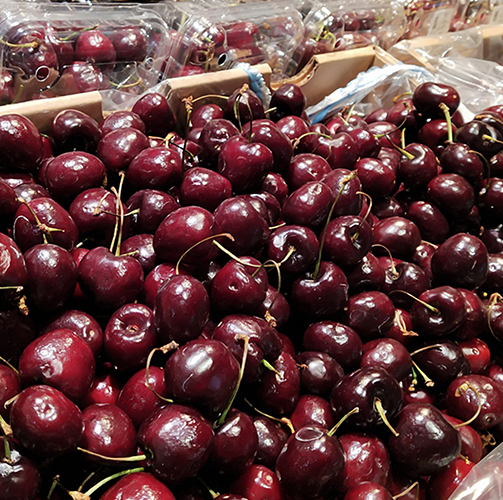

Cheery Future for Cherries
While other parts of the horticulture sector have hit hard times, cherry growers have bounced back quickly from the Covid years. Cherry exports rose by an impressive 40 percent in 2022 to $78 million and are tipped to double within the next two to three years.
Reece van der Velden, General Manager of New Zealand Cherry Corp based in Cromwell, says exporting is the way to go for cherry growers. “We can’t keep up with demand, which is why we have recently expanded our orchard to two-and-a-half times its original size. “The timing of our crop is around Chinese New Year. The New Zealand domestic market gets flooded every year with volume, so you really have to focus on quality and export.” Reece is the second generation of his family to run the business, a joint venture that has 105ha of plantings. “For a while we had the largest netted orchard in New Zealand,” he says. “We ended up moving away from the first model which was close-quarter planting, and we went for big spaces, 5m by 3m.
This set the new industry standard for how to plant cherries. We got told when we did it that we were mad, but we did it anyway, because you can’t just plant purely for volume, you need big fruit.” Cherry exports have benefitted from improved cool chain and transport management as well as advances in technology, which have allowed for better monitoring of the fruit, giving live updates on location, humidity and temperature while in transit to the customer. “We even have a light meter that can see if someone’s opened a door or not.”


Farmlands TFO Bevan Meiklejohn says unlike certain other fruit, cherries require specific conditions that are only available in a few parts of the country. “Central Otago is where it’s at - 90 percent of export cherries are out of there, but there are also a handful of growers in Hawke’s Bay and Marlborough, who mainly grow for the domestic market. Funnily enough, there’s a cherry orchard right next to Farmlands in Blenheim.” Bevan says Central Otago lends itself to cherry growing, as it is dry and hot in the summer and has cold and reasonably dry winters. “They need about 800 hours of that winter chilling, we get 1,100. You can get a wee bit of that in Hawke’s Bay but you need to put products on to mimic winter chilling. You get good winter chilling, good sunlight once you get the leaf on in summertime, but you do have issues with frosts, that’s why they invest heavily in frost protection.” Bevan says one of the big changes in the industry has been in pruning methods, with many growers switching from the Central Leader method to Upright Fruiting (UFO) systems that cost significantly less to manage. “They don’t need to be elevated as high and you don’t need as skilled labour; you can get them trained within a week,” he says. “Central leader is the traditional Christmas tree shape and needs more skill and expertise. A season to get it right.”
One of the challenges for cherry growers is the specialist packhouse equipment required, due to the small size of the fruit. As an example, New Zealand Cherry Corp partnered with Tomra Investing in a multi-million- dollar optical fruit sorter. “If you’re just a hobby farmer who has 4-5ha, relying on it being managed and packed by a third party, you will find it difficult,” Reece says. He also says cherry growers need to understand the reason they’re doing it. “We are focused mainly on the export market. Given the cost of labour input and regulation, it doesn’t make sense to cater to the domestic market only. If the focus is only on volume, orchards will only grow small fruit. Small fruit has lower returns, making it less viable to export due to airfreight costs. Growers need to be selective on planting varieties that grow big fruit, not just ones that crop well.

